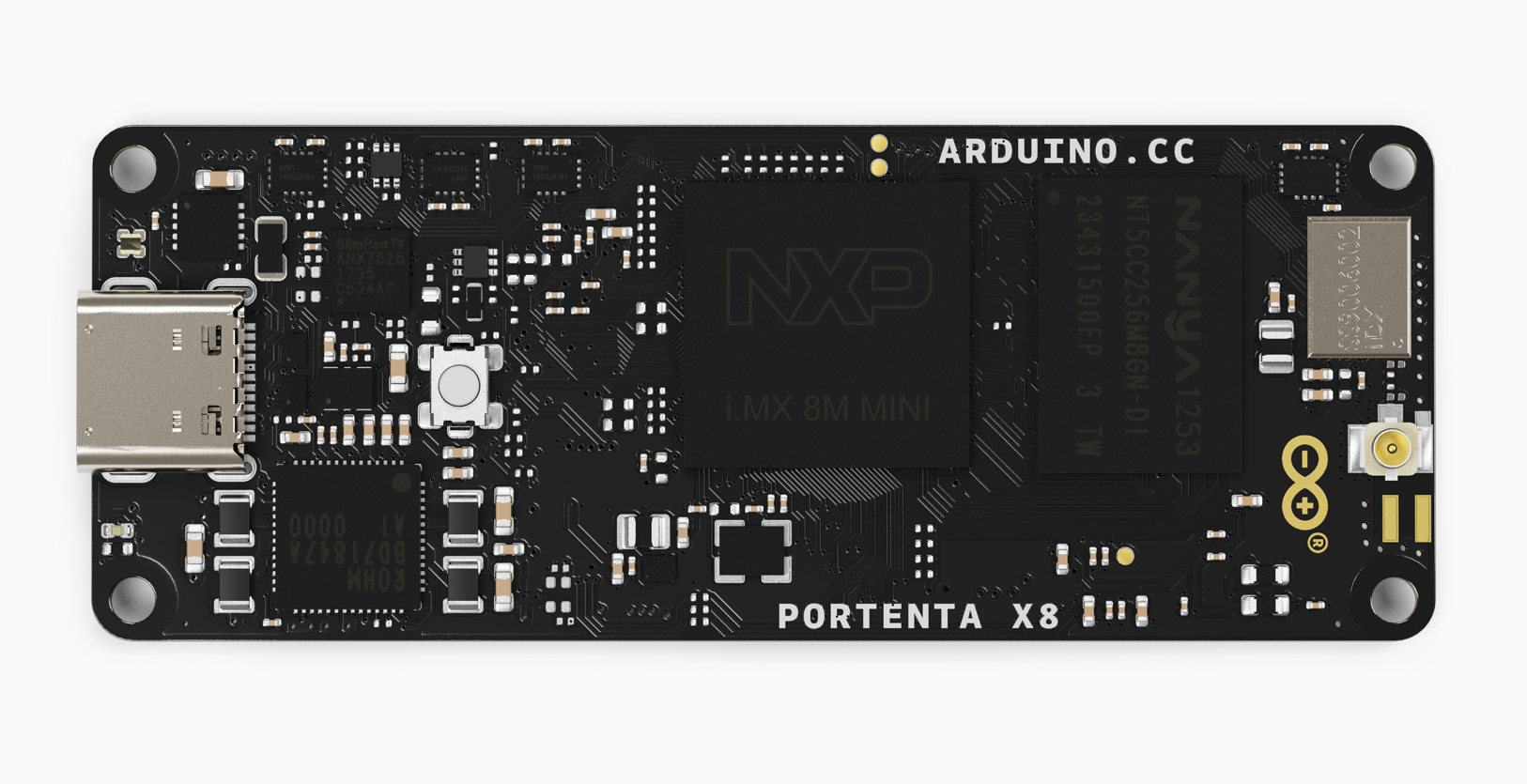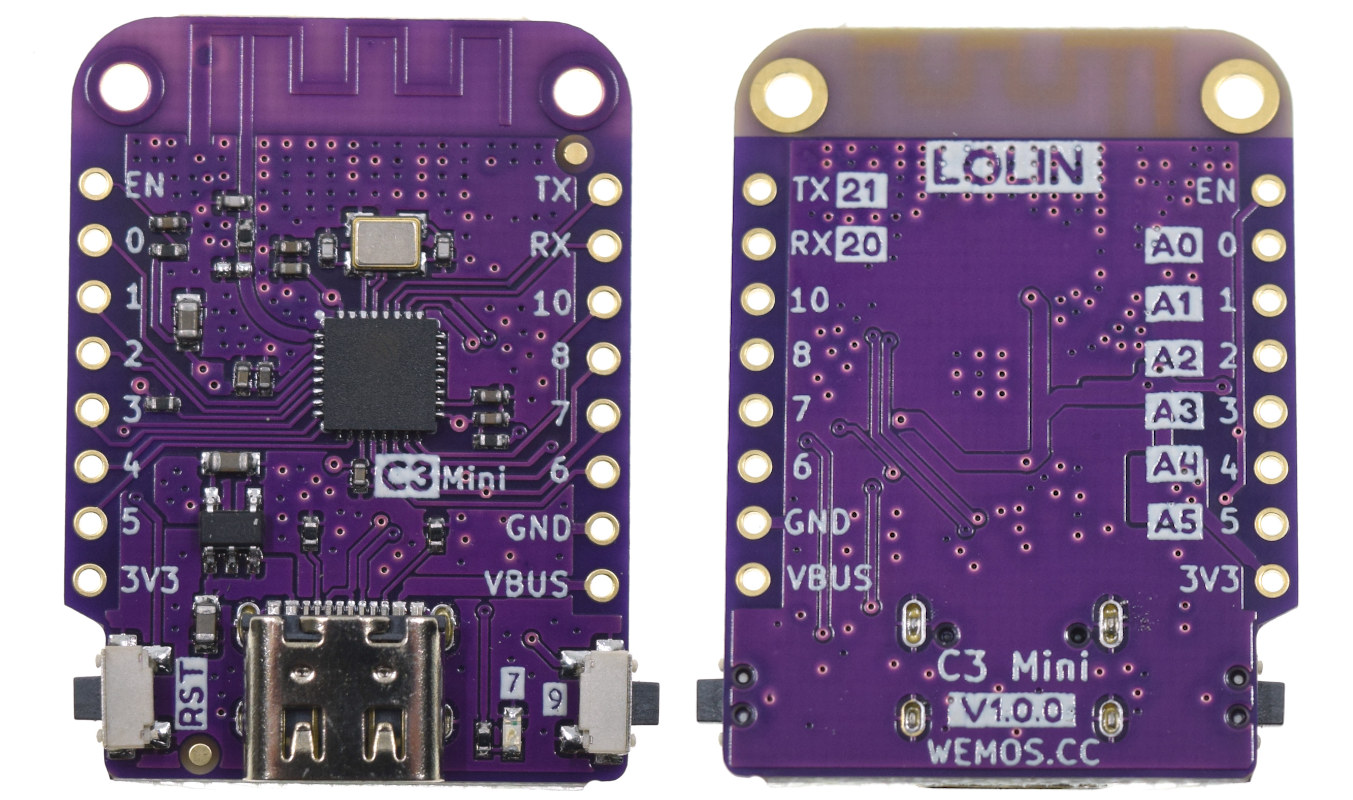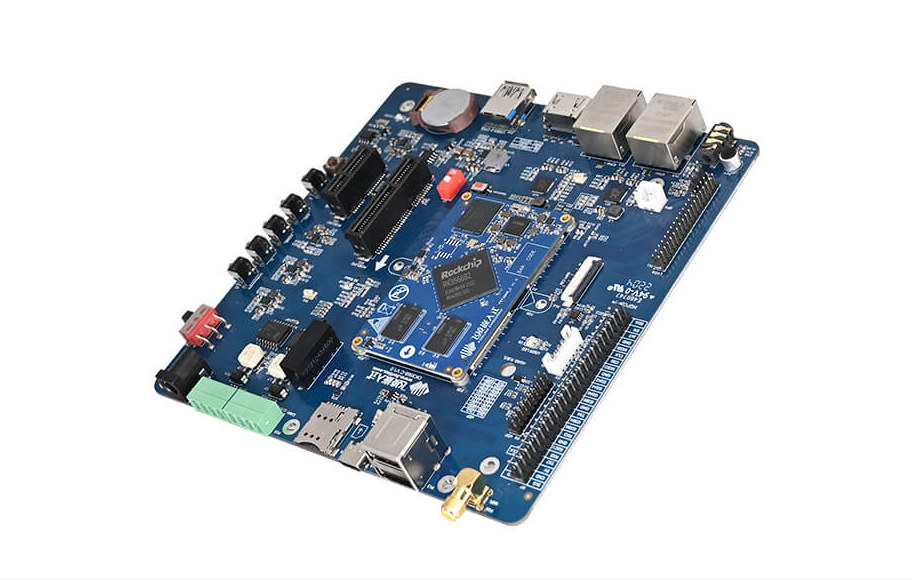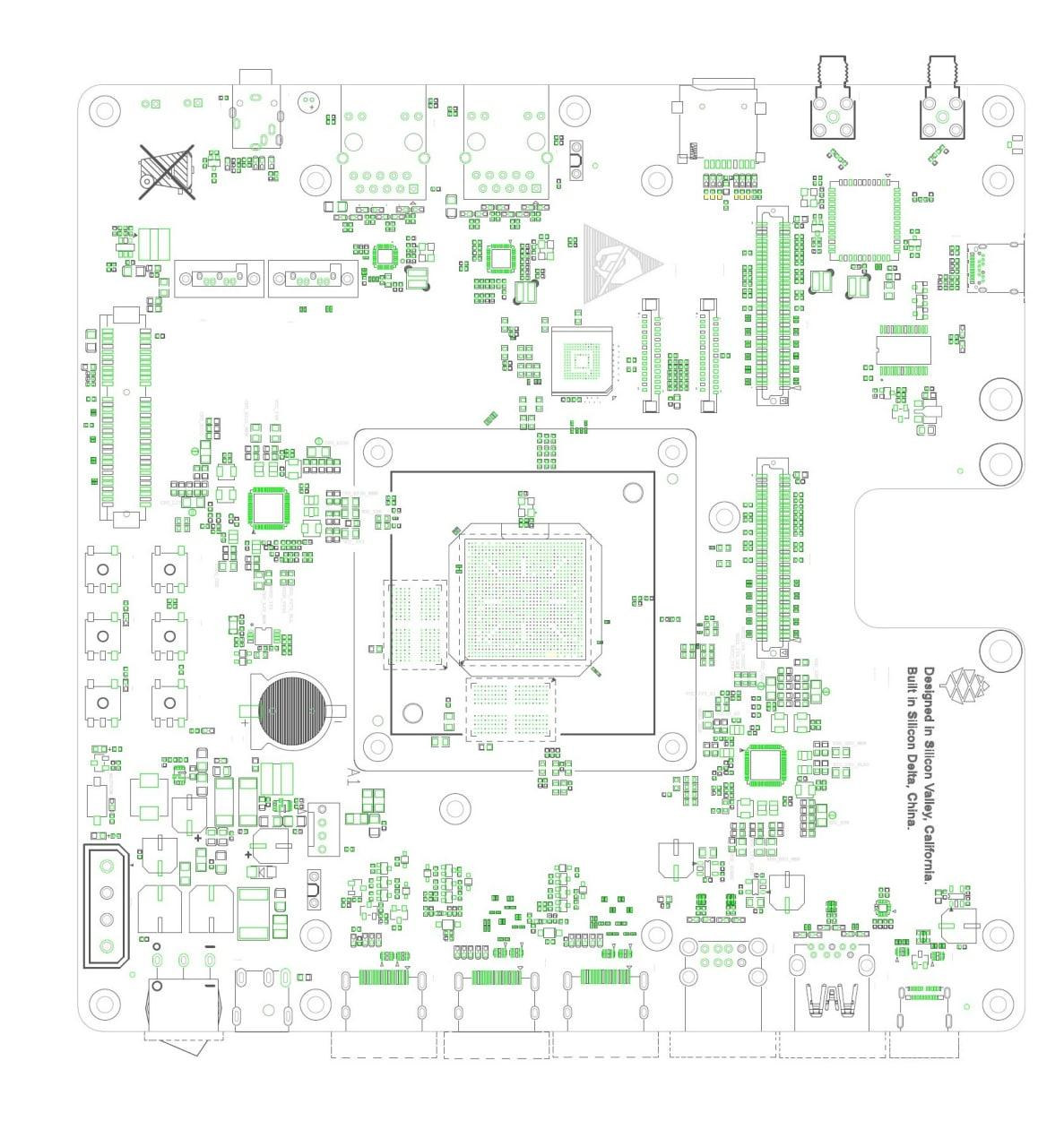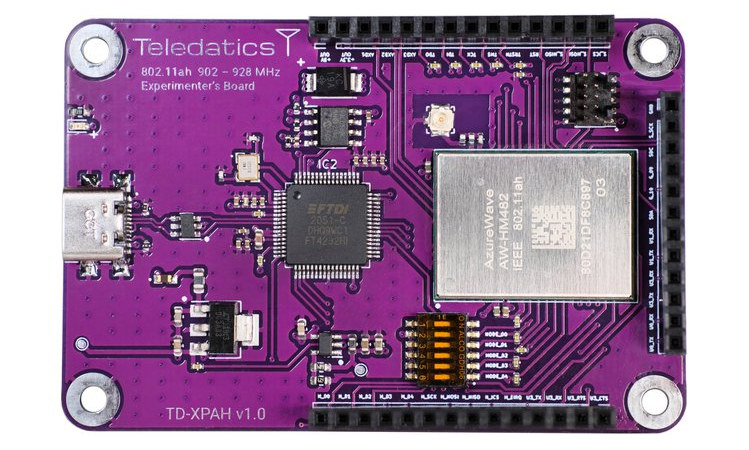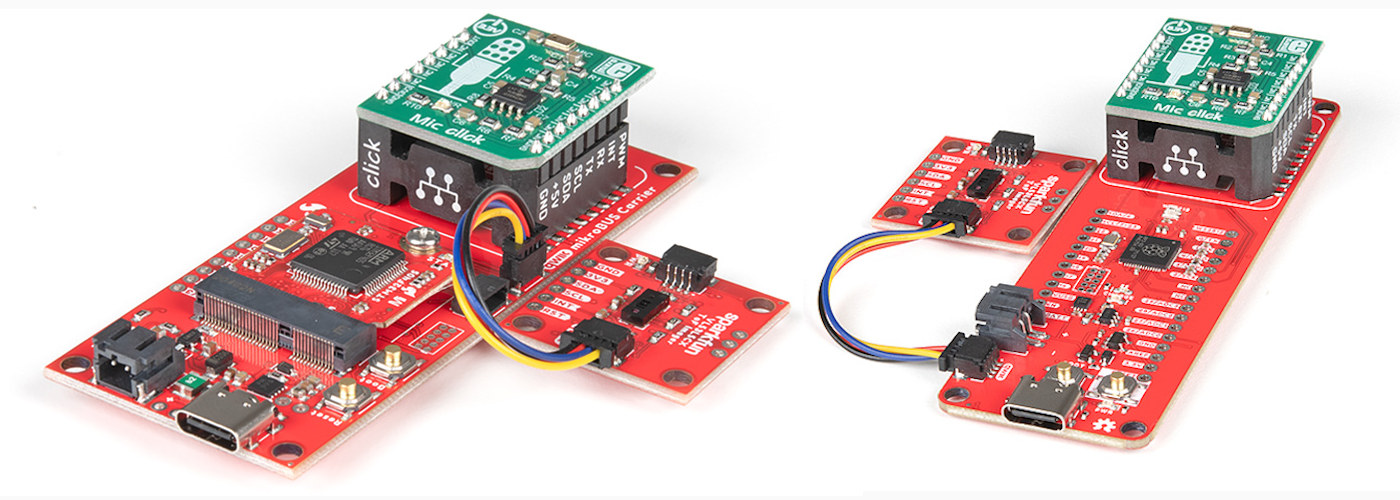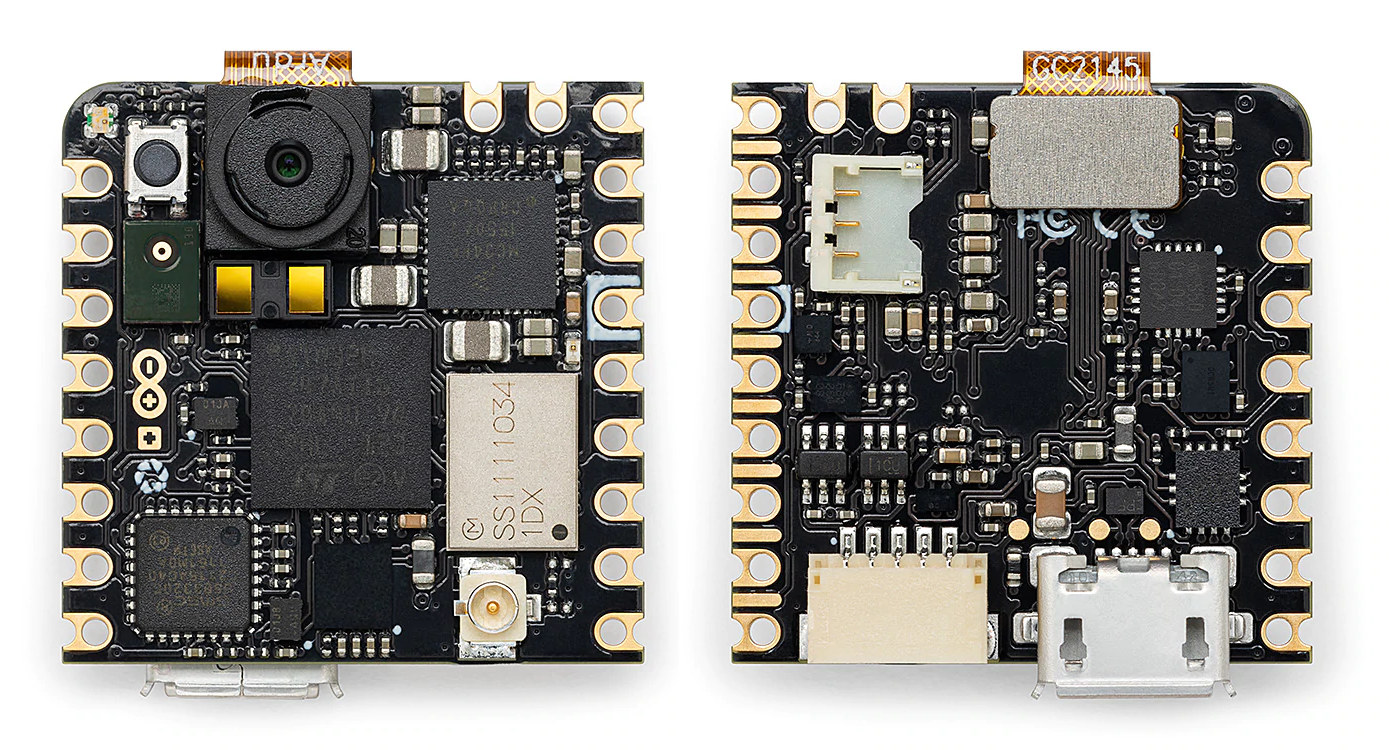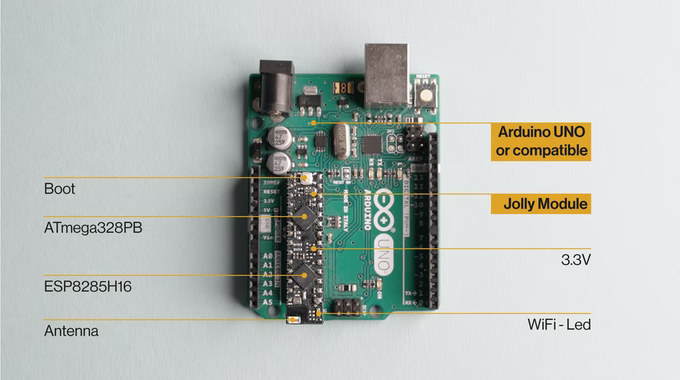In simpler times, Raspberry Pi was making Arm Linux SBC’s, and Arduino MCU boards, but after Raspberry Pi got into the MCU business last year, it’s now time for Arduino to introduce its first Arm Linux board with the Arduino Portenta X8. The new board since comes with the same STM32H7 Cortex-M7/M4 microcontroller found in the Portenta H7 boards, but add a more powerful, Linux-capable NXP i.MX 8M Mini processor with four Cortex-A53 cores and a Cortex-M4 core, coupled with 2GB RAM and a 16GB eMMC flash. Arduino Portenta X8 specifications: SoC – NXP i.MX 8M Mini Arm Cortex-A53 quad-core up to 1.8 GHz,1x Cortex-M4 real-time core up to 400MHz. Microcontroller – STMicro STM32H747AII6 Cortex-M7 @ 480 MHz + M4 @ 240 MHz MCU with 2MB dual-bank Flash memory, 1 MB RAM, Chrom-ART graphical hardware accelerator System Memory – 2GB LPDDR4 Storage – 16GB eMMC flash Connectivity Gigabit Ethernet interface […]
LOLIN C3 Mini ESP32-C3 board is compatible with Wemos D1 Mini shields
Wemos LOLIN C3 Mini board is powered by Espressif ESP32-C3 WiFi and BLE RISC-V microcontroller and follows the company’s earlier Wemos D1 Mini (ESP8266) and LOLIN S2 Mini (ESP32-S2) form factor for compatibility with the original stackable Wemos D1 shields. The tiny board comes with 4MB flash embedded in the ESP32-C3 chip, a USB Type-C connector, reset and user buttons, as well as sixteen through holes for GPIOs, VBUS, 3.3V, and ground signals. LOLIN C3 Mini V1.0.0 specifications: SoC – Espressif Systems ESP32-C3FH4 single-core 32-bit RISC-V (RV32IMC) microcontroller up to 160 MHz with 400 KB SRAM, 4MB Flash Connectivity – 2.4 GHz WiFi 4 and Bluetooth 5.0 LE (in SoC) Expansion headers – 2x 8-pin headers with up to 12x GPIO, ADC, I2C, SPI, UART (3.3V I/O voltage) USB – 1x Type-C USB for 5V power and programming Misc – Reset button and button 0 also used to enter Device […]
OK3568-C SBC provides dual GbE, WiFi 5, 4G/5G connectivity, multiple display interfaces
Taking a break from the recent RK3588 news, let’s check out a board based on Rockchip RK3568 quad-core Arm Cortex-A55 processor with the Forlinx OK3568-C single board computer equipped with up to 8GB RAM and 64 GB storage. The board is comprised of the company’s FET3568-C system-on-module and OK3568-C carrier board offering multiple display interfaces, plenty of connectivity options with dual Gigabit Ethernet, WiFI 5, Bluetooth 5.0, as well as optional 4G or 5G cellular connectivity, and PCIe slots. OK3568-C specifications: FET3568-C SoM SoC – Rockchip RK3568 quad-core Cortex-A55 processor @ up to 2.0 GHz with Mali-G52-2EE GPU supporting OpenGL ES 1.1, 2.0, 3.2, Vulkan 1.0,1.1, OpenCL 2.0, 1 TOPS NPU, 4K H.264, H.265, VP9 VPU System Memory – 2GB (default), 4GB, or /8GB DDR4 Storage – 16GB eMMC flash 4x 80-pin board-to-board connectors with I/Os and power signals Supply Voltage – DC5V Dimensions – 70 x 45mm Temperature range […]
QuartzPro64 SBC coming soon with RK3588 SoC, 16GB RAM, $300+ price tag
As expected, Pine64 has now unveiled its own Rockchip RK3588 SBC with the QuartzPro64, joining many others from Radxa to Banana Pi, and lesser-known companies such as Mixtile and Mekotronics. The QuartzPro64 single board computer will be equipped with 16GB RAM, 64GB eMMC flash, and with a large 180×180 mm form factor, offers plenty of ports including two HDMI outputs, one HDMI input, two SATA ports, two Gigabit Ethernet RJ45 connectors, and more. QuartzPro64 specifications: SoC – Rockchip RK3588 octa-core processor with four Cortex-A76 cores @ 2.4 GHz, four Cortex-A55 cores @ 1.8 GHz, an Arm Mali-G610 MP4 GPU, a 6TOPS NPU, 8K 10-bit decoder, 8K encoder System Memory – 16GB LPDDR4x Storage 64GB eMMC flash 2x SATA ports MicroSD card slot Video Output – 2x HDMI 2.1 ports up to 8Kp60, 2x MIPI DSI “DPHY” interfaces Video Input – 1x HDMI port up to 4Kp60, 2x MIPI CSI “DCPHY” […]
802.11ah WiFi HaLow development board launched for $99 (Crowdfunding)
When 802.11.ah WiFi operating in the 900 MHz frequency range for low-power long-range communication was announced in 2014, then named WiFi HaLow in 2016, I naively assumed it would soon compete against other LPWAN standards like LoRaWAN or Sigfox. However, over the next few years, we did not see much interest in the wireless standard. But it may be picking up now, as Gateworks recently announced a Newracom NRC7292 based 802.11ah WiFi HaLow Mini PCIe module for their Arm Linux SBC’s, and a company called TELEDATICS has now introduced the Halo TD-XPAH 802.11ah Hallow development board featuring an AzureWave AW-HM482 module. Halo TD-XPAH board specifications: 802.11ah WiFi HaLow connectivity AzureWave AW-HM482 module based on Newracom NRC7292 Cortex-M3/M0 SoC with 752KB RAM, 2MB flash Compliant with IEEE 802.11ah WiFi HaLow operating in 902.0 ~ 928.0 MHz range Up to 15 Mbps data rate Up to at least 1km range, but can […]
SparkFun Raspberry Pi RP2040 & MicroMod boards take mikroBUS Click expansion boards
We’ve previously written articles about boards featuring the mikroBUS interface supporting thousands of Click expansion boards from Mikroelectronika, and now the company has collaborated with Sparkfun who launched MicroMod and Raspberry Pi RP2040-based boards with a mikroBUS socket, plus Qwicc connectors. Raspberry Pi RP2040 is the well-known dual-core Arm Cortex-M0+ microcontroller found in Raspberry Pi Pico and a range of third-party boards, while Sparkfun MicroMod‘s are M.2 MCU modules with chips from Microchip, Nordic Semi, Ambiq, Espressif Systems, and NXP. Sparkfun RP2040 mikroBUS development board specifications: MCU – Raspberry Pi RP2040 dual-core Cortex M0+ microcontroller up to 133 MHz with 264 KB SRAM Storage – 16MB QSPI flash, MicroSD card socket (on the bottom side) USB – USB Type-C port Expansion mikroBUS Socket 2x Qwiic connectors Thing Plus (or Feather) pin form factor with 18 GPIO pins including up to 4x 12-bit ADC, up to 8x 2-channel PWM, up to […]
Arduino Nicla Vision – A tiny STM32H7 board with 2MP camera, WiFi & Bluetooth LE, sensors
Arduino Nicla Vision is an ultra-compact (~2.3×2.3 cm) board powered by an STMicro STM32H7 dual-core Cortex-M7/M4 microcontroller, and equipped with a 2MP camera, a WiFi & Bluetooth LE module, and a few sensors. Those features make the board suitable for machine vision and edge computing applications such as asset tracking, image detection, object recognition, and predictive maintenance. For instance, image detection, facial recognition, automated optical inspection, vehicle plate reading, or gesture recognition can be added to projects, either using Nicla Vision as a standalone board or in combination with Portenta or MKR boards. Arduino Nicla Vision specifications: Microcontrollers – STMicro STM32H757AII6 dual-core MCU with Arm Cortex M7 @ 480MHz, Cortex-M4 @ 240MHz, 2 MB flash, 1MB RAM Storage – 16MB QSPI flash Connectivity – 2.4GHz WiFi 802.11b/g/n up to 65 Mbps and Bluetooth 5.1 BR/EDR/LE via Murata 1DX module Camera – 2MP GC2145 color camera. USB – Micro USB port […]
ESP8285 WiFi DIP module replaces ATMega328P MCU on Arduino UNO board (Crowdfunding)
Released over 10 years ago, Arduino UNO is still the best-selling Arduino board, but lacking WiFi in the IoT era is not ideal, so Gianluca Martino, Arduino co-founder and working with the company until 2015, decided to design the Jolly DIP module based on ESP8285 WiFi chip that can replace the ATmega328P 8-bit AVR DIP-40 microcontroller. Since ESP8285 cannot provide all I/Os, notably analog inputs offered by ATmega328P, Gianluca combined it with the ATMega328PB microcontroller in a compact SMD package to offer firmware compatibility plus WiFi connectivity in the same DIP form factor. Jolly module specifications: MCU – Microchip ATMega328PB 8-bit AVR microcontroller with 32 KB ISP Flash, 1 KB EEPROM, 2 KB SRAM (Based on data from the datasheet) Wireless chip – Espressif Systems ESP8285H16 WiFi SoC with 2MB integrated flash plus ceramic antenna Communication interfaces between the two chips – SPI + UART (the latter exclusively for ESP8285 […]


